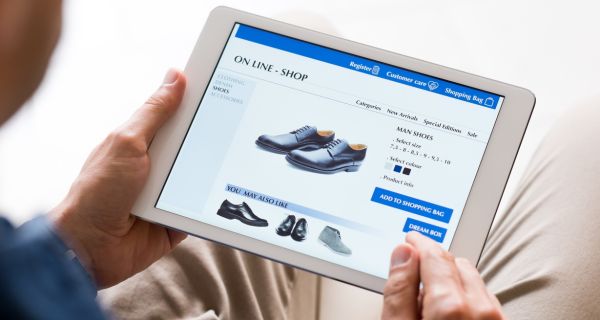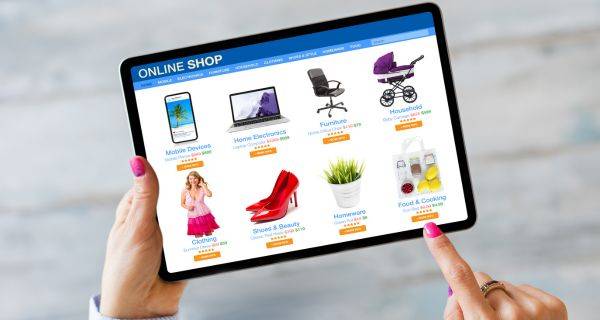In today’s fast-paced digital era, the world of e-commerce is continuously evolving. With increasing numbers of consumers turning to online shopping, businesses are constantly searching for innovative ways to captivate their audience and drive higher sales revenue. In this evolving competitive landscape, augmented reality (AR) and 3D product display have become the secret sauce that can take your ecommerce merchandising practices to new heights.
Imagine a shopping experience where you can see a product in your space, interact with it, and thus make informed purchasing decisions. It is what AR technology brings to the table. By seamlessly merging the virtual and physical worlds, AR offers a unique opportunity for businesses to bridge the gap between online and offline shopping.
This article will delve into the exciting realm of website merchandising. We will explore how leveraging this evergreen tactic, you can transform your online store into a beautiful visual playground that entices customers, enhances engagement, and ultimately drives higher sales revenue. Let’s embark on a journey to uncover the untapped potential of 3D and AR in current-day ecommerce merchandising and how it opens new revenue streams to boost e-commerce adoption.
What is eCommerce Merchandising?
eCommerce Merchandising refers to the strategic activities and techniques used to present and promote products effectively in an online retail environment. It involves various ecommerce merchandising best practices to maximize sales, improve customer experience, and drive engagement on an e-commerce platform. In simple terms, eCommerce merchandising is like arranging products in a physical store to attract customers and encourage them to purchase. It includes product categorization, placement, visual design, pricing strategies, promotional campaigns, and personalized recommendations. Using eCommerce product merchandising strategies, online retailers can create appealing product displays (visual merchandising), highlight special offers, showcase related products, and optimize the shopping experience. The goal is to influence customer behavior, increase conversions, and ultimately drive revenue for the eCommerce business.
Traditional On-Site Merchandising VS. Online or Digital Merchandising
With the advent of e-commerce, digital merchandising strategies evolved, where physical constraints and limitations no longer bound businesses. The digital realm opened up a world of endless possibilities, paving the way for online or digital merchandising.
What is on-site merchandising?
In the pre-digital era, on-site merchandising reigned supreme. Picture yourself strolling through a physical store, encountering well-arranged displays, eye-catching signage, and strategically placed products. The art of traditional merchandising aimed to create an immersive environment, enticing customers to explore, touch, and ultimately make a purchase. From window displays to aisle layouts, every element was meticulously crafted to maximize sales potential.
What is online merchandising?

Website merchandising revolutionized the way products are presented and sold. Online platforms enabled businesses to showcase their offerings to a global audience, transcending geographical boundaries. However, in the vast digital landscape, competition has become fiercer than ever. Standing out from the crowd and capturing customer attention became a formidable challenge.
Augmented reality and 3D designs have been an innovative duo strengthening digital merchandising strategy. AR-powered product displays allow customers to visualize products virtually in their own space, eliminating doubts and increasing purchase confidence. From trying on virtual clothes to placing virtual furniture in their homes, customers can now engage with products like never before. Additionally, 3D designs enable businesses to create immersive and interactive experiences. High-definition visuals, detailed product views, and customizable options entice customers to explore and engage, mimicking the tangible aspects of physical stores. With the power of AR and 3D, online merchandising has evolved into a platform where customers can interact, visualize, and personalize their shopping journey.
These emerging trends in ecommerce merchandising have proven to be highly effective in driving revenue growth. By offering customers a dynamic and engaging shopping experience, businesses can build stronger connections, boost customer satisfaction, and ultimately increase sales conversions. As AR and 3D designs continue to gain traction, the line between physical and digital shopping experiences becomes increasingly blurred, unlocking a new dimension of revenue potential.
The 8 Best eCommerce Merchandising Strategies to boost sales in 2023
As the e-commerce landscape evolves, staying ahead of the competition requires a well-thought-out merchandising strategy that aligns with the latest trends and consumer behaviors. To help your business thrive in 2023, we have handpicked a selection of the best merchandising strategies poised to deliver impressive results. Let’s dive in:
1. Personalized Recommendations
Leverage customer data and artificial intelligence to offer tailored product recommendations. By understanding individual preferences and purchase history, businesses can create personalized shopping experiences that resonate with customers on a deeper level.
2. Social Commerce Integration
Capitalize on the power of social media platforms by integrating direct purchasing options. Facilitating seamless transactions within social media environments enhances convenience and taps into the influence of social proof and user-generated content.
3. Storytelling through Visuals
Use compelling visual content, such as high-quality images, videos, and interactive elements, to tell a captivating brand story. Engaging visuals that showcase product features, benefits, and real-life use cases capture customers’ attention and foster emotional connections.
4. Augmented Reality (AR) Product Try-Ons
Implement AR technology to enable customers to virtually try on products, from clothing and accessories to makeup and eyewear. This immersive experience enhances confidence in purchasing decisions, reducing returns and boosting customer satisfaction.
5. User-Generated Content (UGC) Curation
Encourage customers to share their experiences through reviews, ratings, and user-generated content. Curate and showcase this content on your website and social media platforms to build trust, authenticity, and social proof among potential buyers.
6. Seamless Cross-Channel Experience
Ensure a consistent and seamless shopping experience across multiple channels, including websites, mobile apps, and physical stores. Integrating inventory, pricing, and promotions enables customers to switch between channels effortlessly.
7. Influencer Collaborations
Partnering with influencers has been one of the best ways brands use to communicate their brand value to their audience through established influencers that people admire and follow. Authentic collaborations can expand your reach, increase brand awareness, and drive traffic and conversions through influencer-generated content.
8. Gamification Elements
Incorporate gamification elements, such as reward systems, challenges, and interactive quizzes, to enhance engagement and foster a sense of fun and excitement during the shopping journey.
How does AR and 3D in eCommerce merchandising boost online sales?
One of the key advantages of AR and 3D designs is their ability to bridge the gap between the physical and digital worlds. Customers can virtually try on clothing and accessories, visualize how furniture will fit in their homes, or even see how makeup products will look on their faces. This level of interactivity and realism enhances the customer’s confidence in their purchase decisions, significantly reducing the likelihood of returns and increasing overall customer satisfaction.
Moreover, AR and 3D designs allow businesses to showcase their products from every angle, providing a comprehensive view previously only possible in physical stores. Customers can examine intricate details, zoom in on specific features, and explore product variations effortlessly. This visual engagement creates a deeper connection between the customer and the product, increasing the likelihood of a purchase.
In addition to enhancing the customer experience, AR and 3D designs offer businesses valuable insights. Through analytics and user behavior tracking, companies can gather data on customer preferences and popular product variations and even identify potential areas for improvement. This information can then be leveraged to refine marketing strategies, optimize product offerings, and tailor the shopping experience to individual customer needs.
The rising popularity of AR and 3D designs in ecommerce merchandising has led to increased customer engagement, higher conversion rates, and, ultimately, a business sales revenue boost. By embracing these emerging trends, companies can differentiate themselves in the highly competitive online marketplace, capture customer attention, and drive growth.
The role of no-Code AI, 3D, and AR Platforms in E-Commerce Merchandising
In the dynamic world of e-commerce, staying competitive requires businesses to adapt and innovate continually. With the rise of low-code and no-code cloud-based AI, 3D, and AR development platforms, e-commerce web merchandising is transforming. These innovative solutions are revolutionizing how businesses create and manage their online presence, driving growth and delivering exceptional customer experiences.
Developing AI-powered, 3D, and AR-rich websites traditionally required significant time, resources, and specialized technical expertise. However, low-code and no-code platforms like ourselves have democratized the process by enabling users with varying technical and non-technical backgrounds to build sophisticated e-commerce websites without extensive coding knowledge. This no/low-code alternative has gained widespread popularity, positioning itself as a global mainstream solution for businesses.
Time Efficient
One of the key benefits of low-code and no-code platforms is the accelerated development process. By utilizing intuitive drag-and-drop interfaces, pre-built templates, and ready-to-use components, businesses can quickly assemble visually stunning websites with AI and 3D elements. This increased efficiency translates into shorter time-to-market, allowing businesses to respond swiftly to market trends and launch compelling online experiences that captivate customers.
Agile Development
These platforms offer flexibility and scalability, empowering e-commerce businesses to adapt and iterate their websites as market demands evolve easily. Through simple customization options, businesses can optimize user interfaces, integrate AI-powered product recommendations, and showcase 3D product visualizations without extensive coding efforts. This agility enables businesses to create personalized, immersive shopping experiences that resonate with their target audience.
Take Control
These cloud-based platforms have reduced dependence on IT departments or external developers. E-commerce businesses can now take control of their web merchandising initiatives, making real-time changes, updates, and optimizations. This empowers marketing and merchandising teams to experiment, iterate, and fine-tune their strategies independently, increasing efficiency and fostering innovation.
Effective Alternative
Low-code and no-code platforms provide cost-effective solutions for businesses of all sizes. Companies can significantly reduce upfront and ongoing maintenance expenses by eliminating the need for extensive coding and development resources. This affordability makes these platforms accessible to small and medium-sized enterprises, leveling the playing field and enabling them to compete with more prominent players in the e-commerce industry.
Integrate 3D and AR into your eCommerce merchandising with PlugXR
In an increasingly competitive e-commerce landscape, businesses need powerful tools to differentiate themselves and capture customer attention. No-code AR development platforms like ours offer precisely that. By simplifying the development process, enabling flexibility and scalability, and reducing costs, PlugXR empowers e-commerce businesses to deliver visually stunning, 3D, and AR-rich experiences that drive customer engagement, enhance conversions, and fuel revenue growth. As low-code and no-code alternatives mature and gain popularity, we will likely become the global go-to solution for e-commerce web merchandising. Embracing innovative platforms like ourselves can position your businesses at the forefront of digital transformation, equipping you with the tools necessary to thrive in the competitive e-commerce landscape of today and tomorrow. Sign up for PlugXR Creator or book a free demo to get started!

